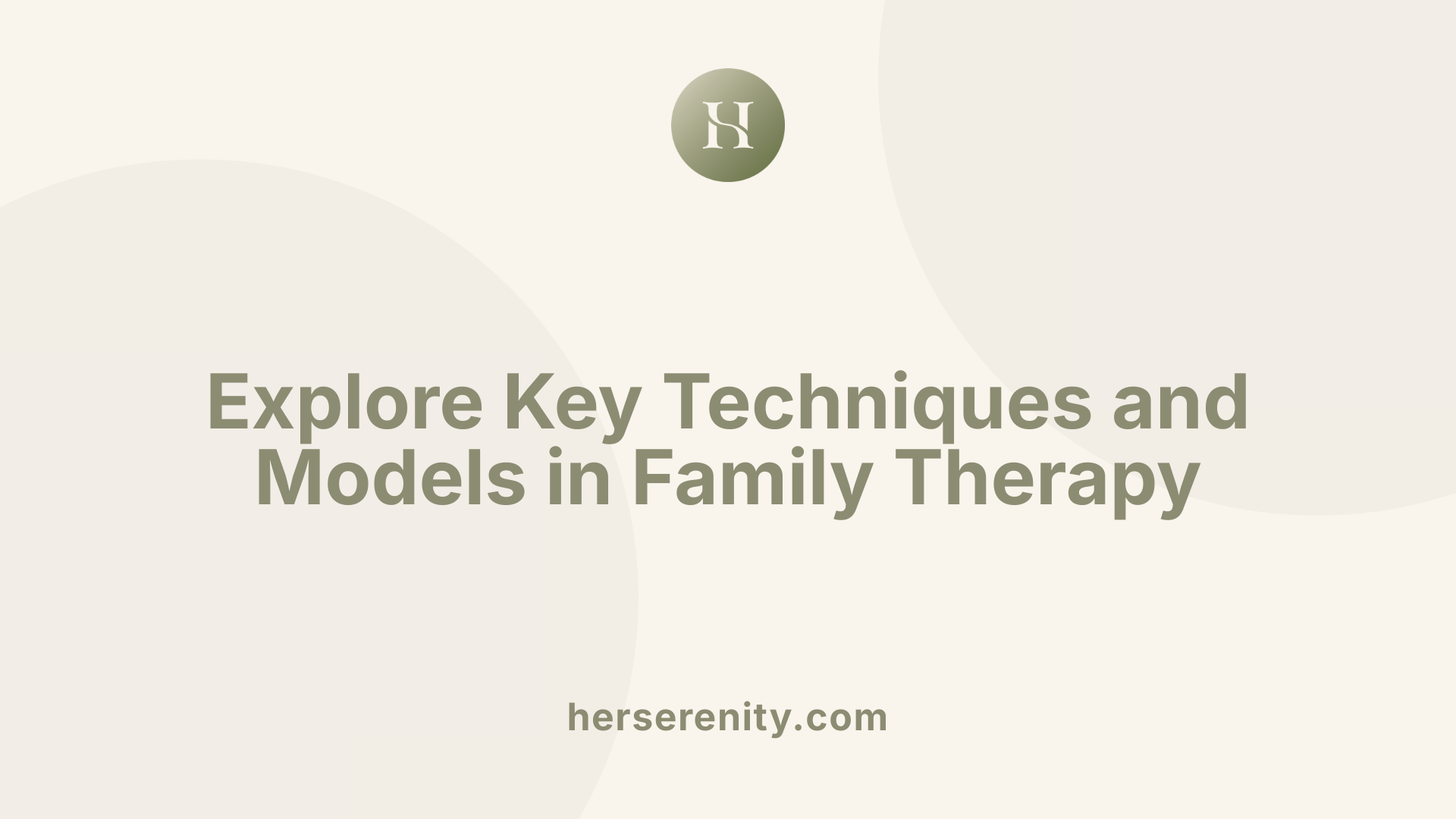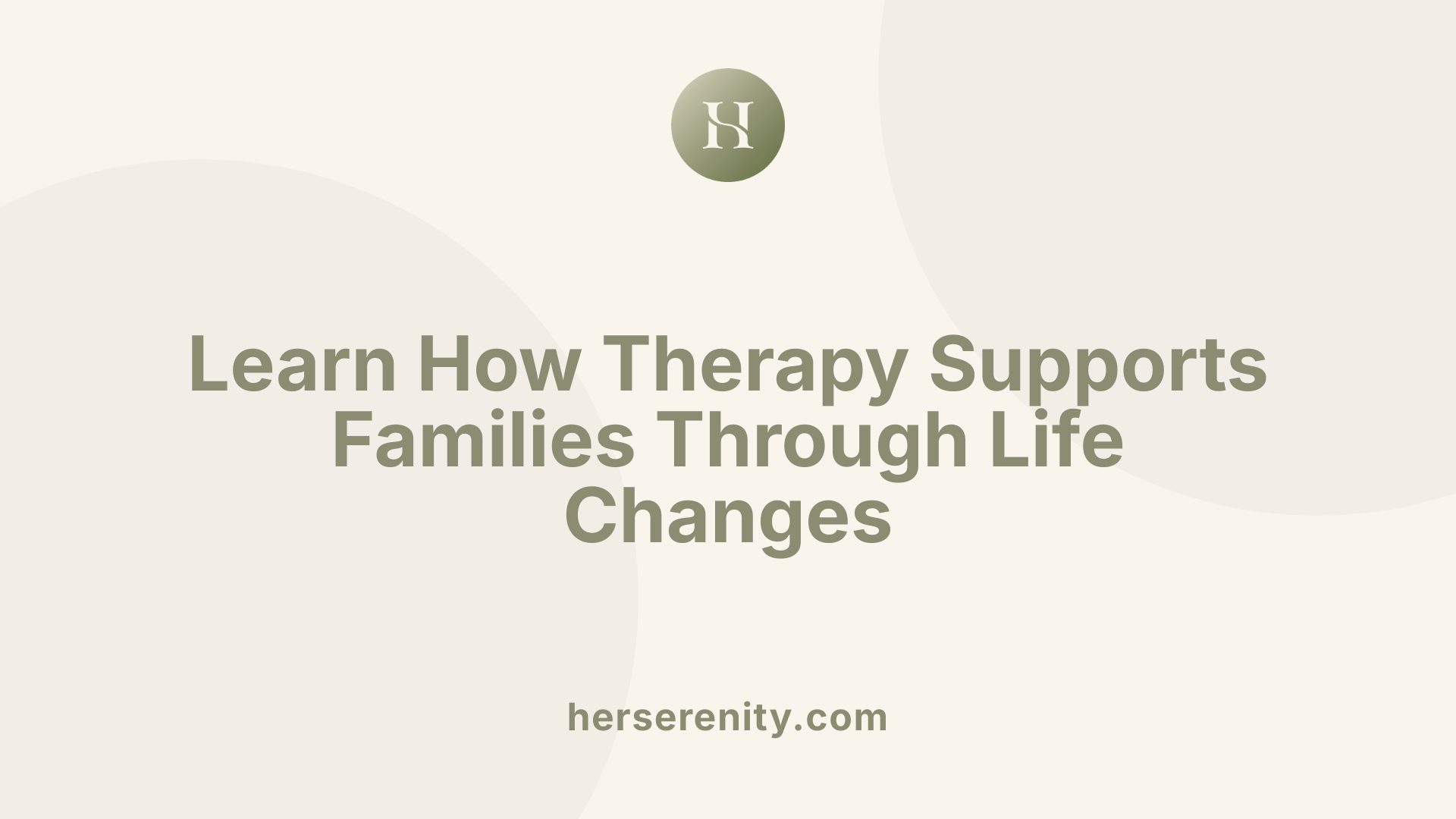Understanding the Power of Family Therapy
Family therapy serves as a pivotal tool in fostering healthier, more connected family relationships. Rooted in systemic understanding, it emphasizes addressing issues collaboratively within the family unit to promote healing, understanding, and resilience. Families facing common challenges such as communication breakdowns, conflict, trauma, or life transitions can benefit significantly from tailored therapeutic approaches that aim to strengthen bonds and facilitate lasting change.
Foundations of Family Therapy: Techniques and Approaches
What techniques and approaches are used in family therapy?
Family therapy employs a broad spectrum of methods designed to enhance communication, understanding, and problem-solving among family members. These techniques are tailored to address specific family dynamics, conflicts, and emotional needs.
One prominent approach is structural family therapy, which focuses on establishing and maintaining healthy family hierarchies and boundaries. Therapists often use structural maps, such as genograms, to visualize family systems and identify structural issues. This approach helps realign family interactions for healthier functioning.
Another widely-used model is Bowenian therapy, which emphasizes differentiation of self from family influences. Using tools like genograms, therapists help families explore intergenerational patterns and improve self-awareness, leading to healthier individual and family dynamics.
Strategic family therapy targets maladaptive interaction patterns by encouraging behavioral changes through specific interventions, homework assignments, and experimentation. This method often involves direct and goal-oriented tactics to disrupt dysfunctional cycles.
Narrative therapy approaches family issues by examining stories and narratives shared within the family. It encourages re-authoring these stories to create new meaning and foster positive change. Techniques like externalization help family members view problems as separate from themselves, reducing blame and fostering collaborative solutions.
In addition to these models, other tools and methods are common in practice:
| Technique/Approach | Description | Purpose |
|---|---|---|
| Genograms | Visual diagrams illustrating family relationships and history | Explore intergenerational patterns |
| Circular Questioning | Asking questions that examine different family members’ perspectives | Uncover relational dynamics |
| Conflict Resolution | Strategies like active listening, soft start-ups, 'I' statements, and de-escalation techniques | Manage disagreements constructively |
| Role-playing | Simulating family situations to practice new behaviors | Enhance understanding and communication |
| Solution-Focused Techniques | Fixing the present and future rather than dwelling on problems (e.g., Miracle Question) | Promote hope and change |
| Internal Family Systems (IFS) | Exploring different parts of the self to achieve harmony | Foster internal and family balance |
Overall, these approaches work collaboratively to resolve conflicts, strengthen bonds, and promote emotional health. The choice of techniques depends on the family's unique structure and needs, but all aim to foster healthier, more supportive interactions.
Benefits of Family Therapy: Building Resilience and Emotional Bonds

How can therapy contribute to healthier family relationships and bonds?
Family therapy creates an open, safe environment where members can express their thoughts and feelings freely. This safe space helps reduce communication barriers and fosters understanding among family members.
Therapists assist families in identifying underlying patterns, dysfunctional roles, and conflicts that may be affecting relationships. By addressing these issues, families learn effective tools and strategies for communication, conflict resolution, and setting healthy boundaries.
As a result, family members develop greater empathy and emotional insight. This not only strengthens individual bonds but also promotes a sense of belonging within the family unit.
Addressing individual challenges, such as trauma, mental health issues, or behavioral problems, further contributes to overall harmony. When individual members feel understood and supported, family relationships naturally improve.
In the long run, therapy enhances problem-solving skills, resilience, and emotional connections. These improvements lead to stronger, more supportive family bonds, capable of withstanding future difficulties.
What is the role of therapy in strengthening family relationships?
Therapy’s primary role is to build and sustain healthier family relationships by offering a supportive environment where families can openly communicate. Family members learn to express their feelings effectively, listen actively, and set appropriate boundaries.
Effective communication techniques, such as role-playing, conflict resolution exercises, and behavioral strategies, help families address and resolve disagreements constructively. This reduces tension and fosters a more harmonious atmosphere.
Therapy also provides guidance for navigating challenging life changes, including divorce, grief, or trauma. Learning and practicing healthy coping mechanisms under professional guidance increase resilience.
Another important aspect is identifying harmful patterns within family interactions. Recognizing these patterns allows families to work toward healthier dynamics, repair emotional wounds, and prevent future conflicts.
Overall, therapy enhances understanding, promotes positive interactions, and deepens emotional connections, ultimately strengthening the bonds that tie families together.
The Process and Expectations of Family Therapy Sessions

What is the process and what can be expected during family therapy sessions?
Family therapy sessions are led by a trained mental health professional who guides families through discussions aimed at improving communication and resolving conflicts. The process usually begins with an initial assessment, where the therapist gathers information about family dynamics, challenges, and goals.
Once familiar with the family's situation, the therapist creates a safe and supportive environment. This space encourages open expression of feelings, thoughts, and concerns without judgment. During sessions, the therapist employs a variety of techniques such as active listening, conflict resolution strategies, and role-playing to help family members understand each other better.
Family therapy progresses through structured phases. The first phase involves building rapport and identifying communication barriers. The middle phase focuses on addressing specific issues like misunderstandings or behavioral conflicts, teaching new skills such as respectful communication, boundary setting, and effective conflict management.
Throughout therapy, the therapist’s role is to facilitate discussions, provide feedback, and introduce practical tools tailored to the family’s needs. The process is adaptive—sessions can be adjusted to focus on particular challenges or life transitions like divorce, grief, or trauma.
The duration of family therapy varies. Some families may see significant progress after a few sessions, while others require longer-term engagement. The overall goal is to foster a deeper understanding among family members, strengthen emotional bonds, and develop healthier interaction patterns.
In summary, family therapy involves assessment, creating a safe environment, structured phases of intervention, and ongoing adaptation to support the family’s growth. It aims to promote better understanding, communication, and resilience within the family unit.
Techniques and Models in Family Therapy Practice
 Family therapy uses a variety of methods and models to help families improve communication, resolve conflicts, and build stronger relationships. Different approaches are tailored to meet the specific needs of each family, and they often combine several techniques for effective results.
Family therapy uses a variety of methods and models to help families improve communication, resolve conflicts, and build stronger relationships. Different approaches are tailored to meet the specific needs of each family, and they often combine several techniques for effective results.
One common approach is structural family therapy, which emphasizes maintaining healthy family hierarchies and boundaries. Therapists may use structural maps to visualize family organization and set clear boundaries between members.
Another important model is Bowenian family therapy, focused on increasing self-differentiation among family members. This approach often uses genograms — detailed family trees that explore intergenerational patterns and relationships.
Strategic family therapy targets dysfunctional interactions within the family. It employs behavioral interventions such as tasks or homework assignments to change specific patterns of communication and behavior.
Narrative therapy encourages family members to tell their stories and explore the meanings they assign to family dynamics. This approach helps shift negative narratives and develop empowering stories.
In addition to these models, therapists often utilize circular questioning, a technique that develops an understanding of how family members perceive each other's behaviors and roles, fostering empathy and insight.
Throughout therapy, emotional regulation strategies are also introduced to help members manage intense feelings, promote patience, and enhance respectful communication.
Here is a summary of these approaches and tools:
| Model/Technique | Purpose | Typical Tool or Activity |
|---|---|---|
| Structural therapy | Maintain healthy boundaries and hierarchy | Structural maps, boundary-setting exercises |
| Bowenian therapy | Explore family history and intergenerational patterns | Genograms, reflection on differentiation |
| Strategic therapy | Change maladaptive behaviors | Behavioral assignments, direct intervention techniques |
| Narrative therapy | Reframe family stories | Storytelling, externalizing problems |
| Circular questioning | Understand perceptions and interactions | Guided questions that explore relational dynamics |
| Emotional regulation strategies | Help manage strong emotions | Mindfulness exercises, stress management techniques |
Overall, these methods aim to create a supportive environment where family members can better understand each other, develop healthier communication habits, and resolve conflicts constructively. Through targeted activities and systemic techniques, family therapy promotes lasting change and emotional resilience within families.
Supporting Families Through Challenges and Transitions

How does family therapy help families?
Family therapy offers a valuable space for families to improve their communication and gain a deeper understanding of each other's feelings and behaviors. It helps members work together to bring about positive changes within the household.
A family therapist creates a safe environment where everyone can openly discuss difficult emotions and conflicts. Through techniques like cognitive-behavioral therapy and psychoeducation, families learn practical skills to address issues impacting their mental health, relationships, and overall functioning.
This approach proves effective across a wide range of challenges, including mental health struggles, substance use, trauma, divorce, and grief. It benefits family members of all ages by fostering collaboration and shared problem-solving.
Family therapy encourages building stronger bonds and healthier relationships. It equips families with tools to manage future challenges, promoting resilience and mutual support. Overall, it helps families move toward a more harmonious and supportive dynamic.
What is the importance of therapy in fostering understanding and collaboration among family members?
Therapy plays an essential role in helping family members understand each other better and work cooperatively. It provides a structured, safe space for exploring and resolving conflicts.
Using evidence-based strategies like reflective listening and highlighting each other's strengths, therapy helps family members feel heard and valued. Therapists address underlying relationship patterns and facilitate open communication.
Approaches like systemic and family-focused therapies emphasize engaging all members, respecting their perspectives, and connecting with community resources when necessary. Such methods promote lasting positive change and emotional resilience.
By addressing individual issues within the family setting—including trauma, behavioral challenges, or major life transitions—therapy fosters emotional well-being. It reduces misunderstandings, nurtures empathy, and encourages supportive interactions.
In conclusion, therapy nurtures open dialogue and understanding, creating an environment where families can support each other through life's ups and downs. This collaborative process strengthens relationships and promotes healthier, more resilient family units.
Empowering Families Through Therapeutic Transformation
Family therapy serves as a cornerstone in creating resilient, understanding, and emotionally connected families. By addressing systemic issues, fostering communication, and equipping members with practical skills, therapy nurtures healthier relationships and builds a foundation for enduring support. Emphasizing tailored approaches and collaborative efforts, it not only resolves current conflicts but also prepares families to handle future challenges with confidence and cohesion. Investing in family therapy is an investment in the emotional well-being and unity of families, ultimately enriching lives across generations.
References
- How Family Therapy Can Strengthen Relationships | FSC
- The Role of Family Therapy in Strengthening Relationships
- The role of family therapy in improving family dynamics
- Family Therapy Can Strengthen Relationships at Home
- Strengthening Family Bonds: The Role of Family Counseling in ...
- 23 Family Therapy Techniques to Strengthen Your Relationships
- How Therapy Can Improve Family Dynamics | Northpoint Colorado
- Strengthening Family Relationships Through Therapy & Education





